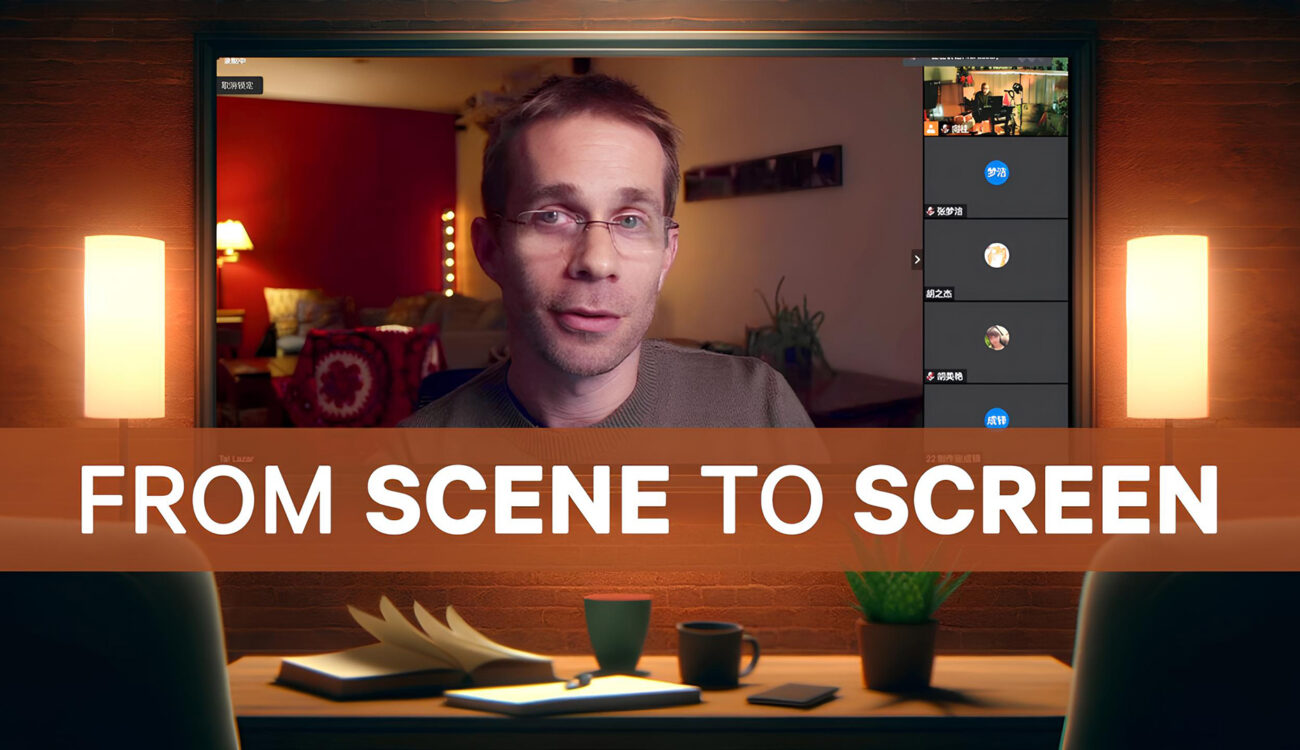
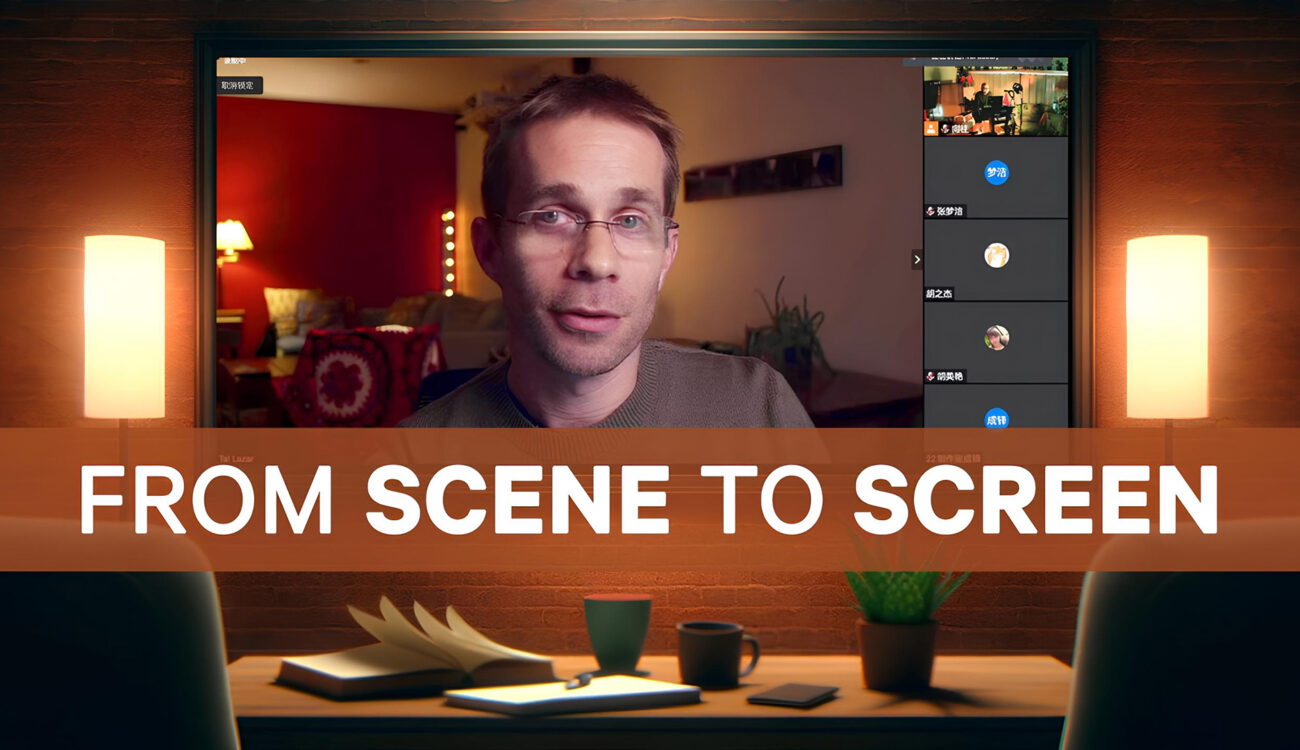
As filmmakers, we often encounter unexpected trouble. Sudden rain ruins a romantic sunset scene, the main actor gets stuck in traffic, and a peaceful meadow you scouted last week happens to be occupied by cows. Sounds familiar? Then you know what happens next: the thoroughly constructed shot list flies into the garbage. However, if the director truly knows what the story and scene’s purpose are, everything’s good. You’ll always figure out another way of communicating what you intend to. In his latest workshop “From Scene to Screen” on MZed.com, professional cinematographer and educator Tal Lazar shows us where the journey to a great visual story begins. He dives deep into the prime components and shares some tips on practicing visual storytelling on your own.
The workshop “From Scene to Screen” is already online and available to all MZed Pro subscribers. Below, we give you a taste of what you can learn. In this article, you will also find an invitation to Tal Lazar’s free one-hour live session “The Camera’s Perspective”, which will be held today at 12 PM ET. Don’t miss it!
Tal Lazar teaches at leading film schools such as Columbia University, the American Film Institute, and Sundance Institute. At the same time, he is a practicing filmmaker with vast experience as a cinematographer, director, and producer. Combining the best of two worlds – professional and academic – Tal’s lessons are full of distilled knowledge and hands-on tips that you can apply straight away. Here, we wrote about his other courses on MZed.com: “The Language of Lighting” and “Cinematography for Directors”.
Effective visuals tell a story
I think you’ll agree that as filmmakers our prime focus is to tell stories. Even better is if we manage to make them captivating and meaningful. On top of that, our biggest hope is that people will understand what we want them to. However, it doesn’t mean we should be concerned about simply providing the information, including bulks of exposition or worse – adding a voice-over explaining what’s happening on screen. That’s not how movies work. No, as Tal Lazar puts it in his workshop, the story doesn’t have to be direct and 100% clear, but it indeed should speak to us subtextually. The audience should feel it and get your message. One of the major tools to achieve that is by using effective images.
We already talked about the word “effective” in detail here. That’s also not a novel concept. Tal points out that images have been considered art and beauty since very early times. Look at these, for example:
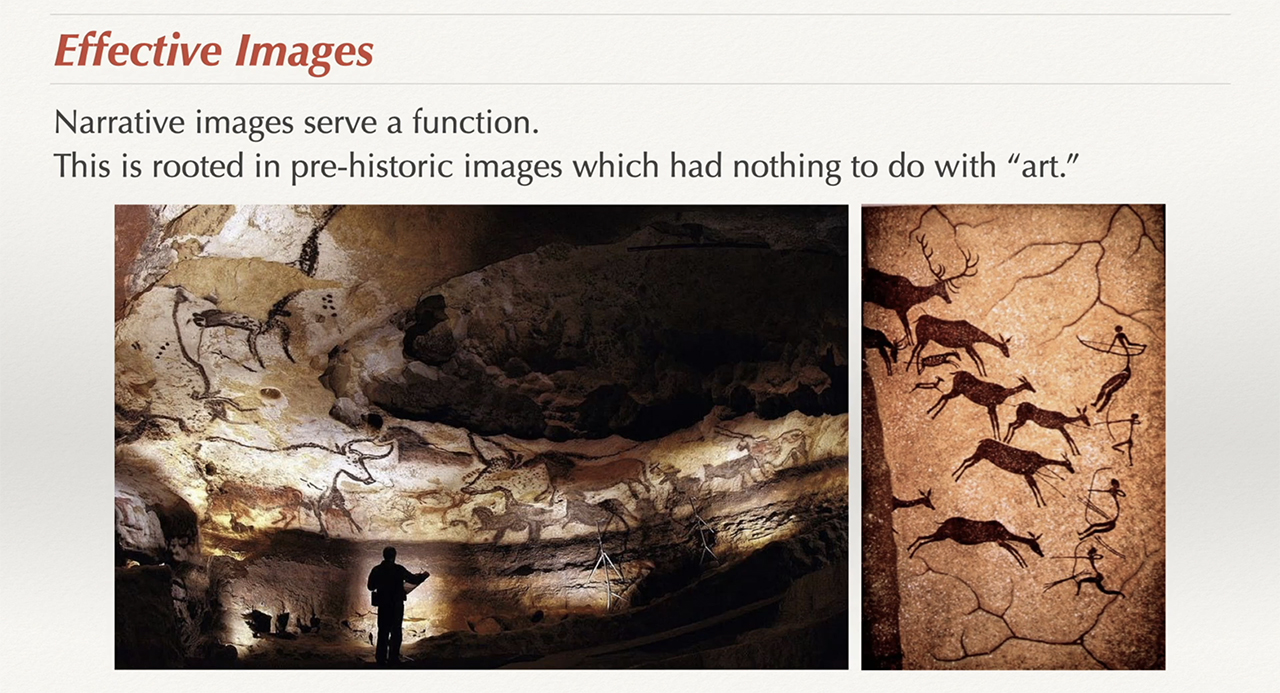
Generally agreed, the goal of these paintings was not to make caves prettier. Instead, they followed a certain ritual – the purpose of saving the stories on the walls. Similarly, your film shots should also have a goal and intention: revealing something about the character, pushing the story forward, hinting at a plot twist coming our way, and so on. What is it? Can you describe it? You may know all the cinematography rules and tricks in the world, but if you concentrate on constructing a beautiful image rather than an effective one, your skills will be useless. Use your magic wisely!
Creating a visual story from scratch
Let’s consider it as settled then (at least in our discussion here): When the director and cinematographer sit down to talk about shots and develop a visual language, they begin with the story. What is a story, though? Tal Lazar gives us a full definition, explaining every significant element and how they work together:
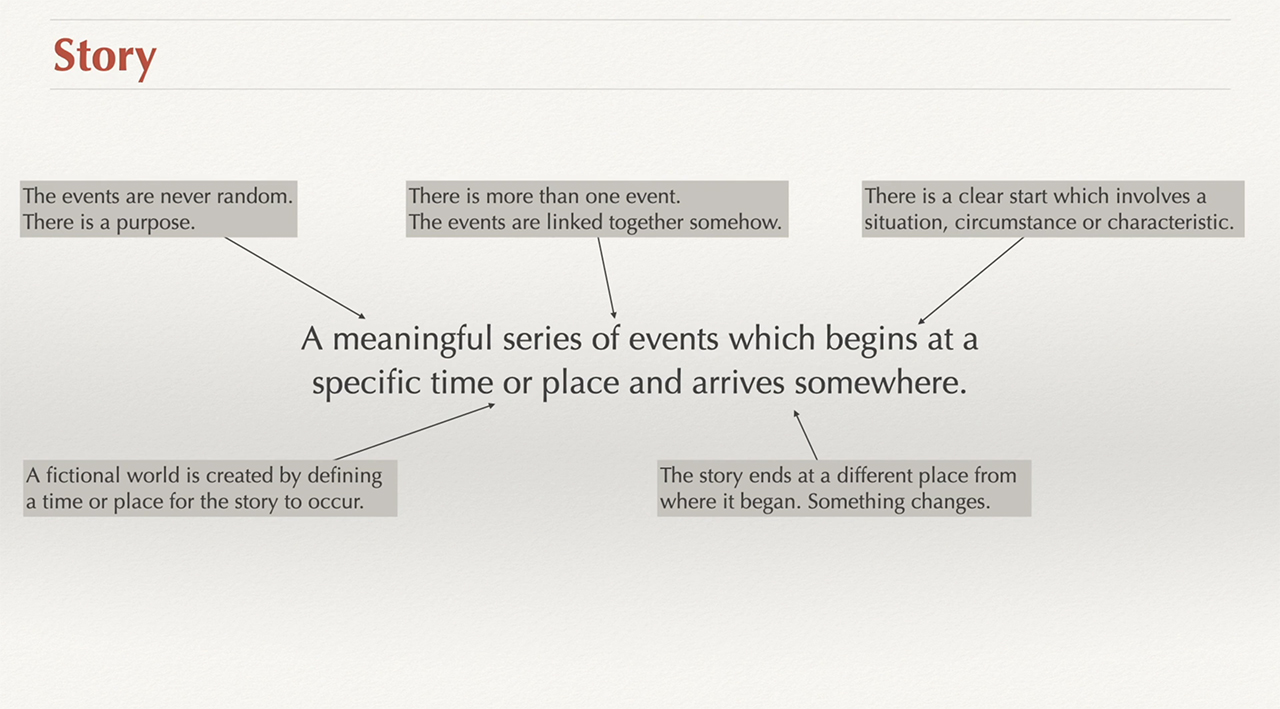
As a director, oftentimes it will be your job to take plain words from the script and turn it into the story. Let’s imagine you see the line “Maria is looking out of the window”. Is it a story? No. Can you make it one? Sure. Give your character a motivation, add a starting and ending point, define the surrounding details, and imagine what internal change this action makes within the one who takes it. Is Maria desperately waiting for her husband to come home, and she runs to the door as soon as she spots his silhouette in the woods? Or maybe, on the contrary, is she scared of a creepy neighbor who stalks and threatens her, and she tries to secretly establish where he is hiding so she can call the police? Both situations can be the same action: a desperate woman standing by the window and peeking outside. But imagine how differently you would show them visually! (How, by the way? Write us your ideas in the comments below, we are very interested in hearing your perspective!)
So, Tal’s golden rule here is: Determine your story first, and only then – discuss the visual methods to tell it. The next level is when you also add narrative perspective, and suddenly your audience knows more than Maria and becomes completely involved. Tal Lazar explains more about it in his workshop.
A small exercise to practice visual breakdowns
A great way to learn visual storytelling is also to practice with other filmmaker’s work. Tal offers a very useful exercise for that. Take a still or a full scene that you like and that makes you feel something strongly. Watch it once, notice how it affects you, let your emotions come to the surface, and enjoy every bit of it. Then watch it again – maybe even without the sound – and answer the following questions.
First:
- What do we know from this scene or shot (without taking into account the entire film context)?
- What is the story here?
- Whose story is it?
After defining what we think the story is, look closely at the methods used in the shot:
- How do we know this?
- What visual elements were used? (Camera angle, movement, contrast, leading lines, headroom, etc).
- What choices were made by the filmmakers?
- Are these choices successful in communicating the story?
If no scene comes to mind for this exercise, here’s an example that Tal Lazar uses in his workshop – a shot from “The Man Who Wasn’t There” by Joel Coen.
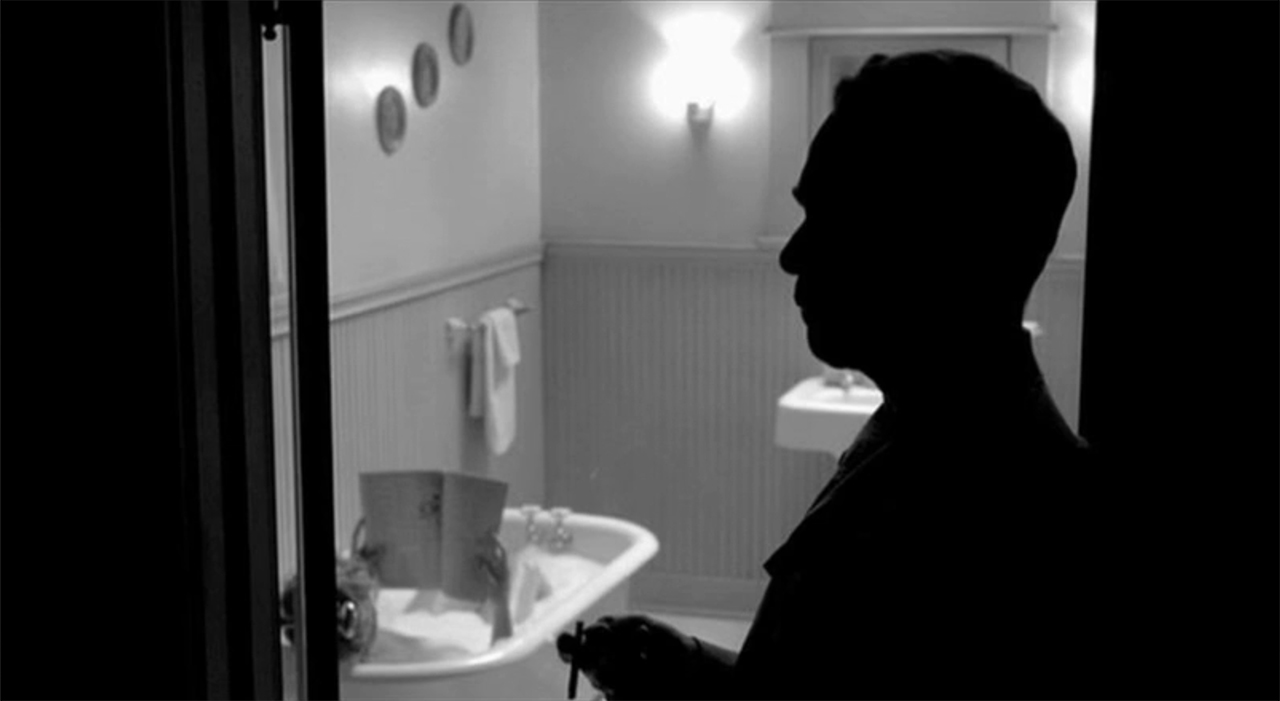
Try analyzing this image using the questions above. Do it on your own first, and then ask your friends or fellow filmmakers to make their assumptions. You will be amazed at what similar feelings and answers everyone will arrive at. Why? Because both director Joel Coen and cinematographer Roger Deakins know exactly what the story is and are masters in how to communicate it visually. To some extent, this is the magic of filmmaking. The good news is that anyone can become a magician if they really want to.
Establishing a narrative perspective
We touched on the narrative perspective above but didn’t dive into the explanation. Well, that’s because Tal Lazar has a special treat for you. Today, on the 4th of April at 12 PM ET, he is giving a live masterclass: “The Camera’s Perspective”. The event is free of charge for anyone to watch live. All you need to do is come to the class by using this Zoom link.
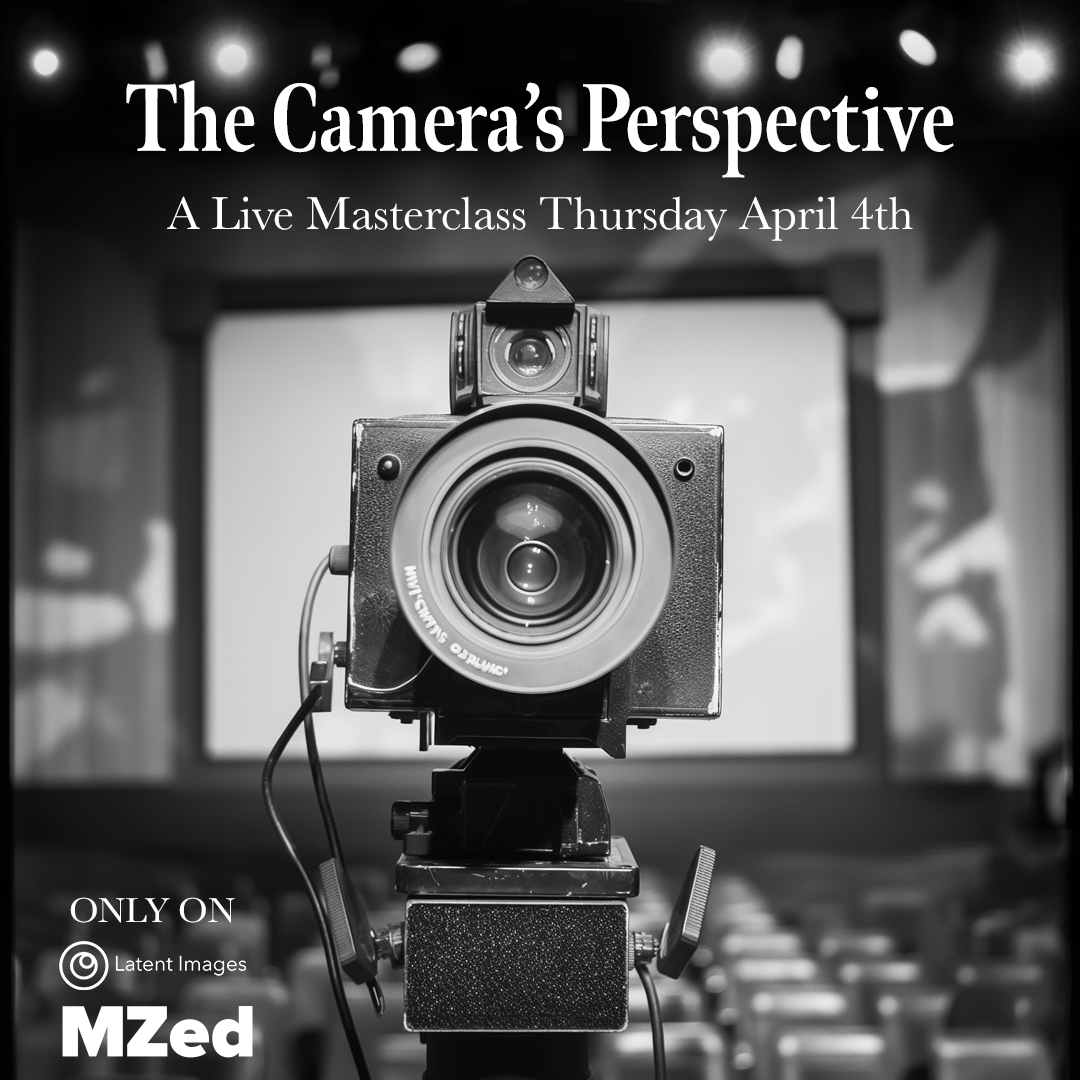
It is through narrative perspective that we can see the world through the eyes of characters vastly different from ourselves, or watch them from afar. The camera plays a significant role in establishing narrative perspective.
Tal Lazar
In this one-hour session with Tal, you will explore how directors and cinematographers find the right approach and use the camera to establish a narrative perspective. Click here to join the Zoom meeting.
Other insights you can gain in “From Scene to Screen”
We hope that our sneak peek into Tal Lazar’s “From Scene to Screen” was useful for you. Apart from the visual storytelling insights already mentioned, you will also learn how to approach the script breakdown, set the correct emphasis, define the main character, as well as acquire other useful exercises to sharpen your visual skills.
This workshop is available only to MZed Pro subscribers.
As an MZed Pro member, you have access to over 500 hours of filmmaking education. Plus, we’re constantly adding more courses (several in production right now).
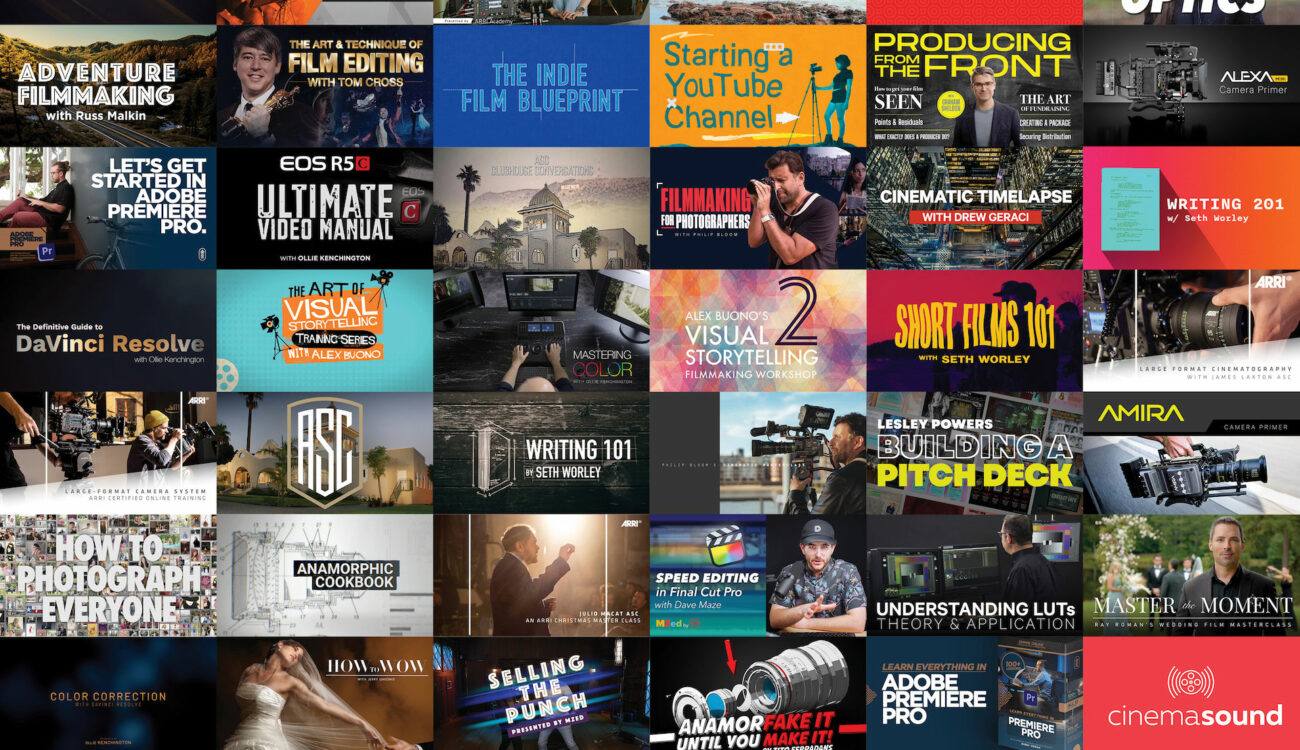
For just $30/month (billed annually at $349), here’s what you’ll get:
- 55+ courses, over 850+ high-quality lessons, spanning over 500 hours of learning.
- Highly produced courses from educators who have decades of experience and awards, including a Pulitzer Prize and an Academy Award.
- Unlimited access to stream all content during the 12 months.
- Offline download and viewing with the MZed iOS app.
- Discounts to ARRI Academy online courses, exclusively on MZed.
- Most of our courses provide an industry-recognized certificate upon completion.
- Purchasing the courses outright would cost over $9,500.
- Course topics include cinematography, directing, lighting, cameras and lenses, producing, indie filmmaking, writing, editing, color grading, audio, time-lapse, pitch decks, and more.
- 7-day money-back guarantee if you decide it’s not for you.
Full disclosure: MZed is owned by CineD.
Join MZed Pro now and start watching today!
Let’s turn the tables now! Want to try out one of the exercises above and share your insights with us? Go ahead and do so in the comments section below!






